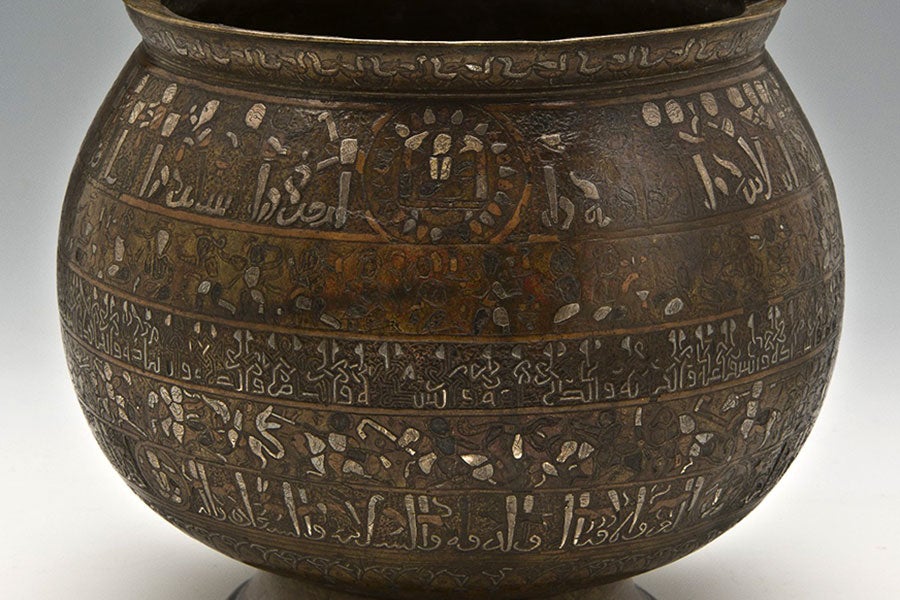The Bobrinski Bucket
Ruba Kana’an
Synopsis:
This presentation explores the rich iconography of the Bobrinski Bucket, made in the city of Herat in 559 AH / 1163 CE. It examines the inscription styles and figural scenes that decorate the surface of the bucket, and also explores the twelfth-century innovations in metalwork inlay and decorative techniques that enabled artists and patrons to communicate their world views and aesthetic choices.
References:
Ettinghausen, Richard. 1943 “The Bobrinski “Kettle”: Patron and Style of an Islamic Bronze” Gazette des Beaux-Arts 6 (24), pp. 193–208. ![]()
Kana’an, Ruba. 2009 “The de jure artist of the Bobrinski Bucket: production and patronage of pre-Mongol metalwork in Khurasan and Transoxiana,” Islamic Law and Society, vol. 16, no. 2, pp. 175–201. ![]()
Piotrovsky, Mikhail. 2001 “The Bobrinski Bucket” in On Islamic Art. St. Petersburg: The State Hermitage Museum. pp. 76–81. ![]()
Ward, Rachel. Islamic Metalwork. London: The British Museum, 1993. ![]()
Citation:
Ruba Kana‘an, “The Bobrinski Bucket,” Khamseen: Islamic Art History Online, published 28 August 2020.

Ruba Kana’an teaches Islamic art and architecture at the University of Toronto. Her research and publications focus on the intersections between art, artists, art production, and law in Muslim contexts. She is author of multiple articles on inlaid metalwork portable objects dating to the twelfth and thirteenth centuries, and the forthcoming book The Friday Mosque: Law, Architecture, and Authority in Pre-Modern Muslim Societies (Edinburgh University Press).


